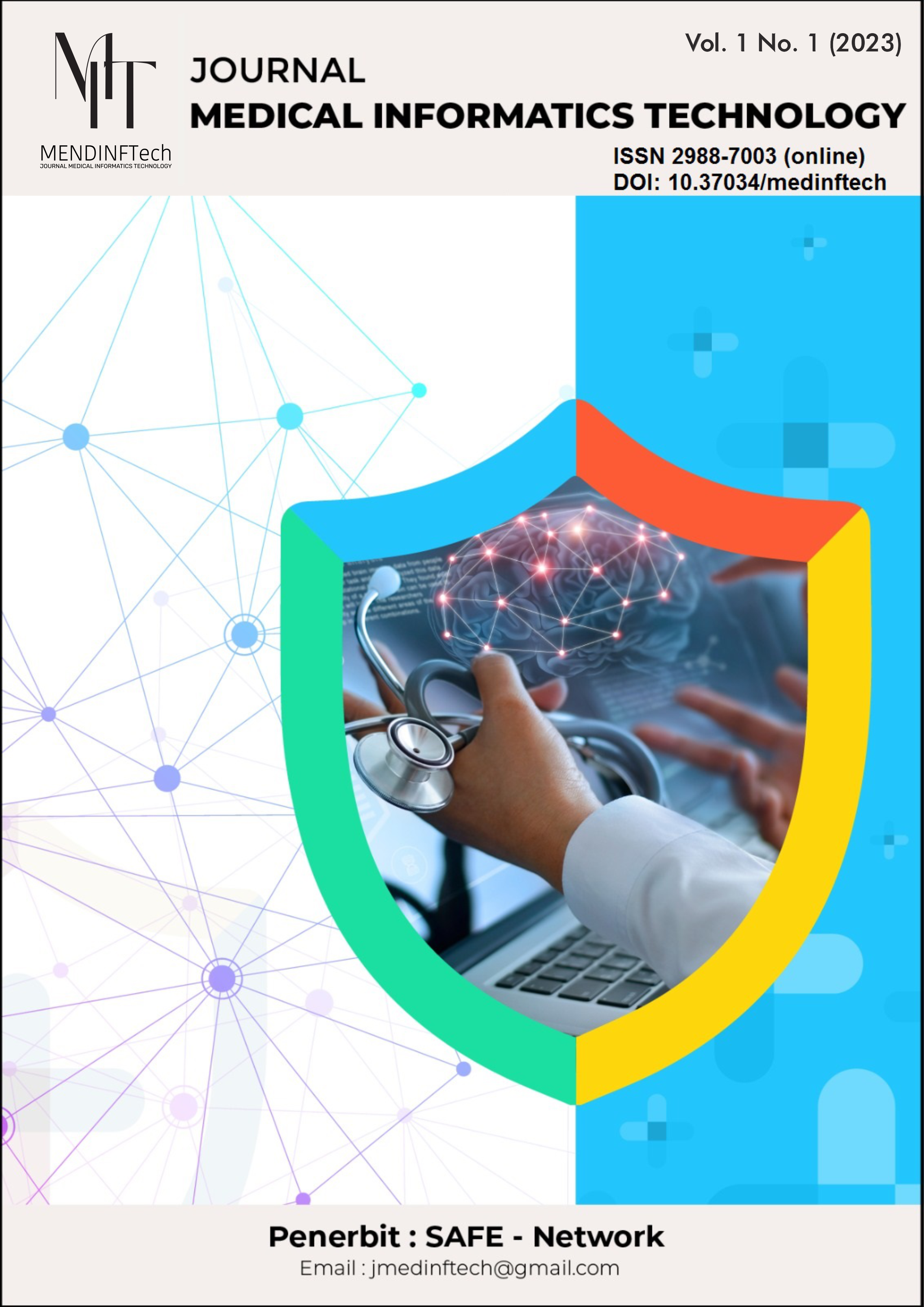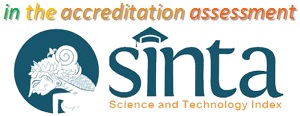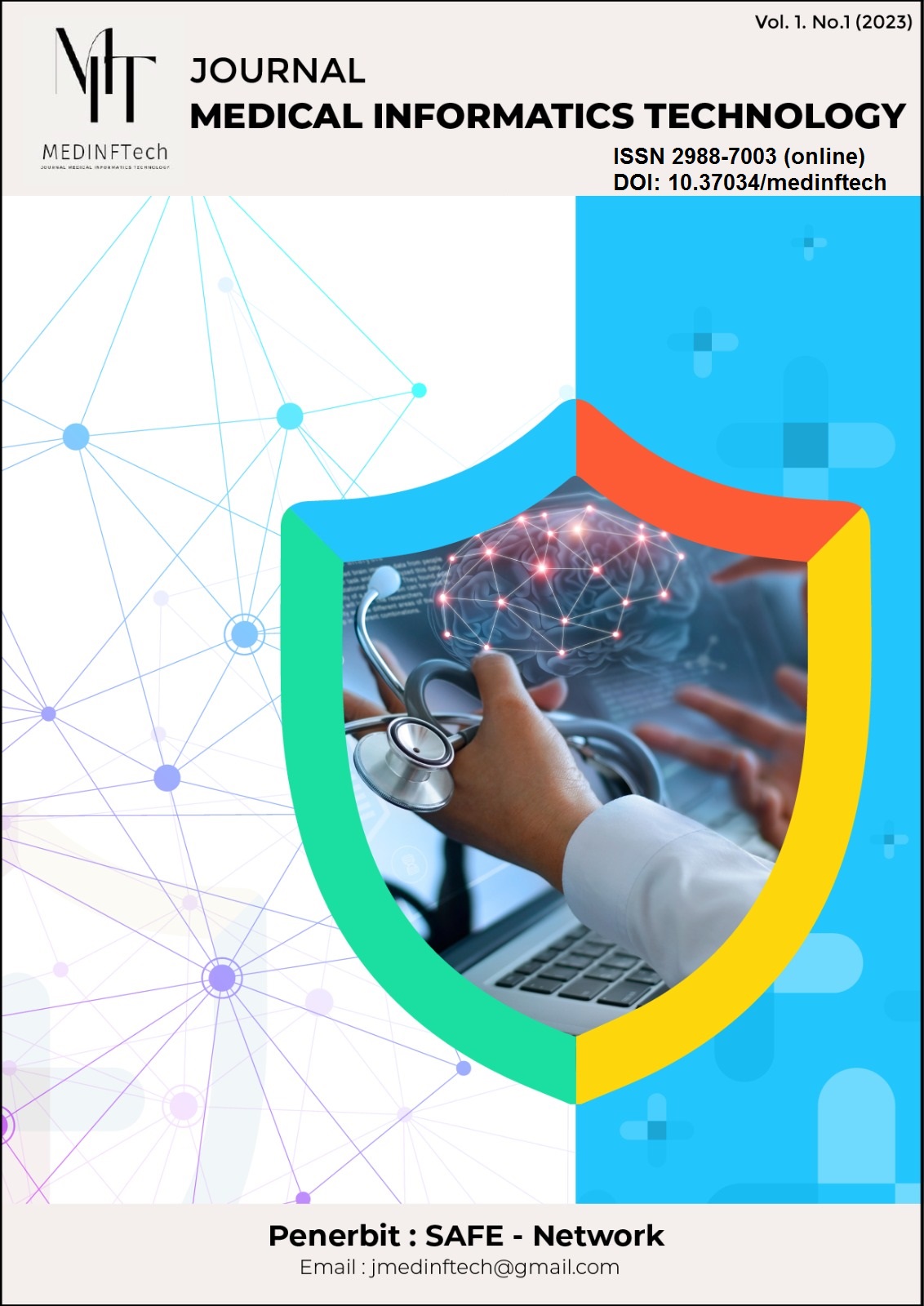Optimization of Breast Cancer Prediction using Optimaze Parameter on Machine Learning
DOI:
https://doi.org/10.37034/medinftech.v1i1.5Keywords:
RapidMiner, Machine Learning, Breast Cancer, Optimizatio, PredictionAbstract
At present, a very common cancer disease in women is breast cancer. This cancer develops in the female breast tissue and is the cancer with the highest mortality rate. This needs great attention. Forecasting breast cancer has been studied by a number of researchers and is considered a serious threat to women. Clinical difficulties in creating treatment approaches that will help patients live longer, due to the lack of solid predictive models that can predict outcomes at an early stage by analyzing patient history data. Because it can affect women all over the world. Early detection of breast cancer is crucial in determining the path of action. Cancer types can be distinguished into two types: benign and malignant. this research aims to provide information and science to medical professionals and also cancer patients to know the classification of the two types of cancer. The research project aims to also leverage data mining techniques using several algorithms on Machine Learning (ML) such as Decision Tree
(DT), Random Forest (RF), K-Nearest Neighbors (KNN), Logistic Regression (LR), Support Vector Machine (SVM), and Gradient Boosting Tress (XGBoost). The results of this algorithm will determine the prediction of the most common types of cancer. The study used 683 samples of breast cancer patients, including 10 characteristics. This test is measured through mammography and biopsy tests. Using K-Fold Validation operators, then the sresults of the study showed that the K-Nearest Neighbor (KNN) algorithm produced the highest accuracy of 96.87% compared to the other five algorithms. Then, as a comparison again, the researchers also optimized the accuracy value using the parameter optimize operator. Where the number produced becomes more overwhelming. The highest accuracy result after calculated with the parameter optimize is the Random Forest (RF) algorithm. Where the result is 100% accurate compared to other ML algorithms.
Downloads
References
M. Shanbehzadeh, H. Kazemi-Arpanahi, M. Bolbolian Ghalibaf, and A. Orooji, “Performance evaluation of machine learning for breast cancer diagnosis: A case study,” Informatics Med. Unlocked, vol. 31, p. 101009, 2022, doi: https://doi.org/10.1016/j.imu.2022.101009.
G. Kaur, R. Gupta, N. Hooda, and N. R. Gupta, “Machine Learning Techniques and Breast Cancer Prediction: A Review,” Wirel. Pers. Commun., vol. 125, no. 3, pp. 2537–2564, 2022, doi: 10.1007/s11277-022-09673-3.
T. Saranya, S. Sridevi, C. Deisy, T. D. Chung, and M. K. A. A. Khan, “Performance Analysis of Machine Learning Algorithms in Intrusion Detection System: A Review,” Procedia Comput. Sci., vol. 171, pp. 1251–1260, 2020, doi:
https://doi.org/10.1016/j.procs.2020.04.133.
N. Arya and S. Saha, “Multi-modal advanced deep learning architectures for breast cancer survival prediction,” Knowledge-Based Syst., vol. 221, p. 106965, 2021, doi: https://doi.org/10.1016/j.knosys.2021.106965.
V. N. Gopal, F. Al-Turjman, R. Kumar, L. Anand, and M. Rajesh, “Feature selection and classification in breast cancer prediction using IoT and machine learning,” Measurement, vol. 178, p. 109442, 2021, doi: https://doi.org/10.1016/j.measurement.2021.109442.
P. Kaur, G. Singh, and P. Kaur, “Intellectual detection and validation of automated mammogram breast cancer images by multi-class SVM using deep learning classification,” Informatics Med. Unlocked, vol. 16, p. 100151, 2019, doi: https://doi.org/10.1016/j.imu.2019.01.001.
A. Conti, A. Duggento, I. Indovina, M. Guerrisi, and N. Toschi, “Radiomics in breast cancer classification and prediction,” Semin. Cancer Biol., vol. 72, pp. 238–250, 2021, doi: https://doi.org/10.1016/j.semcancer.2020.04.002.
A. Saber, M. Sakr, O. M. Abo-Seida, A. Keshk, and H. Chen, “A Novel Deep-Learning Model for Automatic Detection and Classification of Breast Cancer Using the Transfer-Learning Technique,” IEEE Access, vol. 9, pp. 71194–71209, 2021, doi: 10.1109/ACCESS.2021.3079204.
A. Solichin, “Comparison of Decision Tree, Naïve Bayes and K-Nearest Neighbors for Predicting Thesis Graduation,” in 2019 6th International Conference on Electrical Engineering, Computer Science and Informatics (EECSI), 2019, pp. 217–222. doi: 10.23919/EECSI48112.2019.8977081.
S. Kabiraj et al., “Breast Cancer Risk Prediction using XGBoost and Random Forest Algorithm,” in 2020 11th International Conference on Computing, Communication and Networking Technologies (ICCCNT), 2020, pp. 1–4. doi:
1109/ICCCNT49239.2020.9225451.
A. Budiyantara, I. Irwansyah, E. Prengki, P. Pratama, and N. Wiliani, “KOMPARASI ALGORITMA DECISION TREE, NAIVE BAYES DAN KNEAREST NEIGHBOR UNTUK MEMPREDIKSI MAHASISWA LULUS TEPAT WAKTU,” JITK (Jurnal Ilmu Pengetah. dan Teknol. Komputer), vol. 5, no. 2, pp. 265–270, 2020, doi: 10.33480/jitk.v5i2.1214.
M. T R, A. C. Kaladevi, B. J M, V. Vivek, M. Prabu, and V. Muthukumaran, “An Efficient Ensemble Method Using K-Fold Cross Validation for the Early Detection of Benign and Malignant Breast Cancer ,” Int. J. Integr. Eng., vol. 14, no. 7 SE-Articles, pp. 204–216, Dec. 2022, [Online]. Available: https://publisher.uthm.edu.my/ojs/index.php/ijie/arti
cle/view/10810
M. M. Islam, M. R. Haque, H. Iqbal, M. M. Hasan, M. Hasan, and M. N. Kabir, “Breast Cancer Prediction: A Comparative Study Using Machine Learning Techniques,” SN Comput. Sci., vol. 1, no. 5, p. 290, 2020, doi: 10.1007/s42979-020-00305-w.
T. Thomas, N. Pradhan, and V. S. Dhaka, “Comparative Analysis to Predict Breast Cancer using Machine Learning Algorithms: A Survey,” in 2020 International Conference on Inventive Computation Technologies (ICICT), 2020, pp. 192–196. doi: 10.1109/ICICT48043.2020.9112464.
L. Yang and A. Shami, “On hyperparameter optimization of machine learning algorithms: Theory and practice,” Neurocomputing, vol. 415, pp. 295–316, 2020, doi: https://doi.org/10.1016/j.neucom.2020.07.061.
Downloads
Published
How to Cite
Issue
Section
License
Copyright (c) 2023 Journal Medical Informatics Technology

This work is licensed under a Creative Commons Attribution-NonCommercial 4.0 International License.








